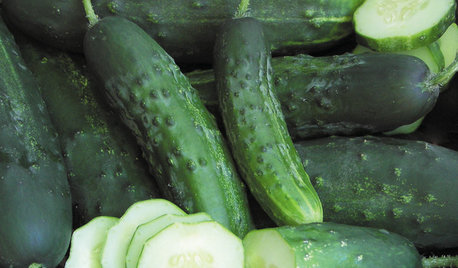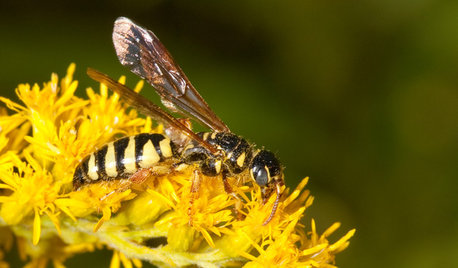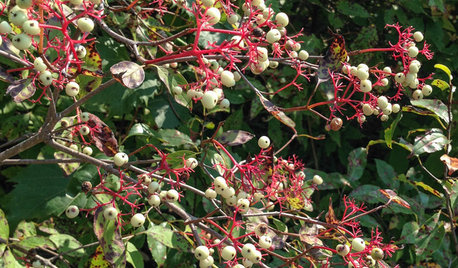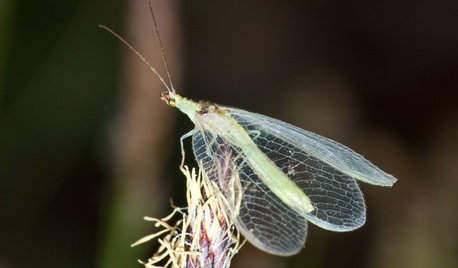It isn't too soon to start thinking about the arrival of these voracious pests. They start their activity when temps reach 65, and for many of us that will be next month if the time hasn't already arrived. I hate these suckers and am on the third year of trying to devise an organic way of getting rid of them.
Originally, several of us made cucumber beetle traps out of anything we could find that attracted them, cucumber skins chopped up in the blender, clove oil (attracts the females only), and tayuya (a South American squash/gourd) root powder ordered over the internet. We put a mixture of the attractant/lure and liquid Sevin into cups or other containers, placed them in the garden, and many beetles died from drinking this brew. For two years I've had lots of cuke beetles in the beginning and almost none two weeks later, fortunately for my melons, squash, and cukes.
So, here goes another round for anyone who's interested this year.
If you click on this site and then your state, a new window, about a third of the way down the page, will provide a list of plants that cucumber beetles are attracted to, ranked from 1 to 59, with anything over 45 being a great lure for them. To my disgust I have not been able to find seeds for a single one of these high-attraction plants this year, and I've hunted all over the internet. So for the lure, I'm going to stick with the tayuya root powder and the clove oil I already have and use them again. Apparently the tayuya attracts cucumber beetles from a distance, while the clove oil, though avidly eaten, too, does not have a long-distance attraction. You just need to set them close to your other plants they attack. If you're interested in seeing if you can control them with these principles, you may already have seeds for some of the high-lure plants listed, so you could use the fruits of those instead.
I had two semi-objections to what I was doing that I think can be overcome. The first was the use of Sevin. Even though no other insects are attracted to the lures, you still had to dispose of the Sevin sooner or later. It takes a couple of months to lose all its toxicity, so it can't be just poured out somewhere whenever.
The second problem I had was with the cups. They certainly litter a garden or a trellis and must be collected at the end of the season. I didn't put covers on them so the beetles could easily find them, so they got diluted and sometimes filled up completely during rainstorms, thus making them absolutely useless. They had to be filled again.
This site is a discussion of all kinds of organic and semi-organic ways to attract and kill cucumber beetles, which first triggered my interest in seeing if these possibilities could be adapted for home gardeners.
This year, instead of using Sevin, I've ordered Red Dye #28 in the form of plaque disclosing tablets. I found a pretty good internet deal on them since none of the drugstores close to me carry them. Apparently when cucumber beetles ingest Red Dye #28, the dye infuses their bodies and in the sunlight it causes a chemical reaction and death to the beetles. The dye is totally harmless to humans and plant life if dumped or spilled into the garden, unlike Sevin.
And last, my system of delivery of the lure... I don't want to use the cups again. This year I plan to soak cucumber boats (any melon would work, too) in either the moistened tayuya root powder or clove oil diluted with water with a dissolved red dye tablet or two included in the mix until they are fully saturated with the lure and the dye. Then I can place them in the garden wherever and let them do their dirty work. Though they won't be entirely care-free (evaporation, etc.), they'll disintegrate back into the soil with no harm to anything (except maybe a few patches of red soil) and I won't have to collect those dratted cups. That's a plus in my book.
My only remaining problem is how to prevent their being made ineffective by rain-flooding. I'll need some sort of cover or umbrella for them unless I just plan to put out new ones after every rain. Any suggestions would be welcome!

















booberry85
jimster
Related Professionals
Windham Landscape Architects & Landscape Designers · Barrington Hills Landscape Architects & Landscape Designers · Norton Shores Landscape Architects & Landscape Designers · Towson Landscape Architects & Landscape Designers · Forest City Landscape Architects & Landscape Designers · Burlington Landscape Contractors · Eagle Landscape Contractors · Gainesville Landscape Contractors · Muttontown Landscape Contractors · Raleigh Landscape Contractors · Rochester Landscape Contractors · Shirley Landscape Contractors · Wailuku Landscape Contractors · Chicago Ridge Landscape Contractors · Mount Vernon Driveway Installation & MaintenanceanneyOriginal Author
hanselmanfarms
gardeningin38671